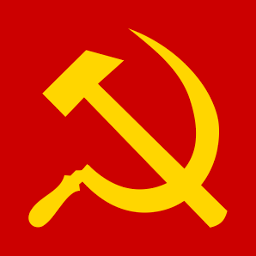Not that it’s… bad per se.
But I feel that it’s already (I’m almost halfway through the book) covering ground that’s talked about in more depth in other books that have come out since 1983. Which I guess isn’t the book’s fault and it’s a nice overview of US history from a different viewpoint, but its analysis is kinda… Eh, bad, I guess? Marxist thought in general does not recognize slaves as “proletarians” and I don’t think many black Americans even recognize themselves as “New Afrikans,” which I think is a Maoist term.
I also don’t like how it misquotes and attacks people like Herbert Aptheker (who was attacked by the FBI during his day) and communist historian Philip S. Foner. Just seems that the author has an axe to grind, which would make sense if he was indeed a Maoist before Gonzalo turned Maoism in to something more than just a pro-China stance during the Cold War. After all, William Z. Foster, Herbert Aptheker, and Philip S. Foner were pretty staunchly pro-Moscow (originally, being a Maoist usually meant that you had a pro-Beijing stance during the Cold War after the Sino-Soviet split).
Anyways, I know that @muad_dibber@lemmygrad.ml loves Settlers and, if I have it right, it influenced him during his more formative years as a comrade. And I get that. So I don’t mean to come off as attacking the book, which is fine as an overview of the atrocities committed by the United States. How many people talk about the genocide against the Asian immigrants along the West Coast of the continental United States? But I do think that it lacks in terms of analysis.
I’m currently halfway through the book, of course, so I’ll continue reading. I like that it gives a who’s who and what’s what of people and events of colonial and United States history. I would recommend it to get a breakdown of the events leading up to the modern-day, but as the saying goes: don’t believe everything you read. Or rather, sometimes, it’s good to read something a bit critically.
Some books I would recommend if you like Settlers (or even didn’t like it):
White Supremacy Confronted: U.S. Imperialism and Anti-Communism vs. the Liberation of Southern Africa from Rhodes to Mandela by Gerald Horne (Author)
Bind Us Apart: How Enlightened Americans Invented Racial Segregation by Nicholas Guyatt
Black Worker in the Deep South by Hosea Hudson (Author)
Imperialism in the Twenty-First Century: Globalization, Super-Exploitation, and Capitalism’s Final Crisis by John Smith (Author)
Red Skin, White Masks: Rejecting the Colonial Politics of Recognition (Indigenous Americas) by Glen Sean Coulthard (Author)


Wait a second, but white workers in the US don’t form a labor aristocracy.
Not all of them, but the labor aristocracy together with the bourgeoisie and the middle classes make up most of US society (at least when Settlers was written). From Chapter 13:
The actual proletarian elements among the white workers are disorganized and disengaged. I don’t see any real proletarian demands from the US white working class, such as open borders, opposition to US police and the military, etc.
How does Sakai come to these conclusions though in statistics?
It’s footnote 4 of Chapter 13, which uses the 1970 US census.
No, I mean how does he come to these conclusions based on the statistics? His definition of what constitutes middle-class or labor aristocrat seems arbitrary.
There’s a list of occupations a few pages into chapter 13:
Sure, Sakai had to make some choices, and the last 50 years have probably proletarianized some of these like Clerical-Admin. But even today, from https://www.bls.gov/cps/cpsaat11.htm the percentage of managers and professionals is 41% (64 million out of 158 million).
I can’t imagine percentages anywhere near these in middle-income countries like Mexico, much less low-income countries like Bangladesh. Sakai calls the US a “headquarters society” that manages the rest of the empire.
This is a Maoist viewpoint. He does not appear to be upfront about how he classifies “labor aristocracy.” By this measure, the DPRK would be comprised of a labor aristocracy.
I don’t know enough about Maoism to answer that. But Lenin in https://www.marxists.org/archive/lenin/works/1916/oct/x01.htm says that
So, at most 20% of the workers were under the sway of bourgeois labor parties. Two world wars and a cold war later that could easily be more than 20% in the US. On top of that over 40% that are managers, professionals, etc.
But I think you’re nitpicking the details too much. The key is not which specific professions get classified as labor aristocracy, the key is how they behave. Do they ally with imperialism and its bourgeois labor parties, or with the global proletariat? Lenin again:
Err, you didn’t really answer my point. You just said that Sakai can’t predict any of this through Lenin’s own words. Aside from what Sakai considers the “labor aristocracy” being arbitrary, by his own metric, the DPRK is also comprised of a labor aristocracy.
They are. Almost everyone living in america is a labour aristocrat. If supposedly global communism exists tommorow, the income of almost all americans will shrink to more than half.